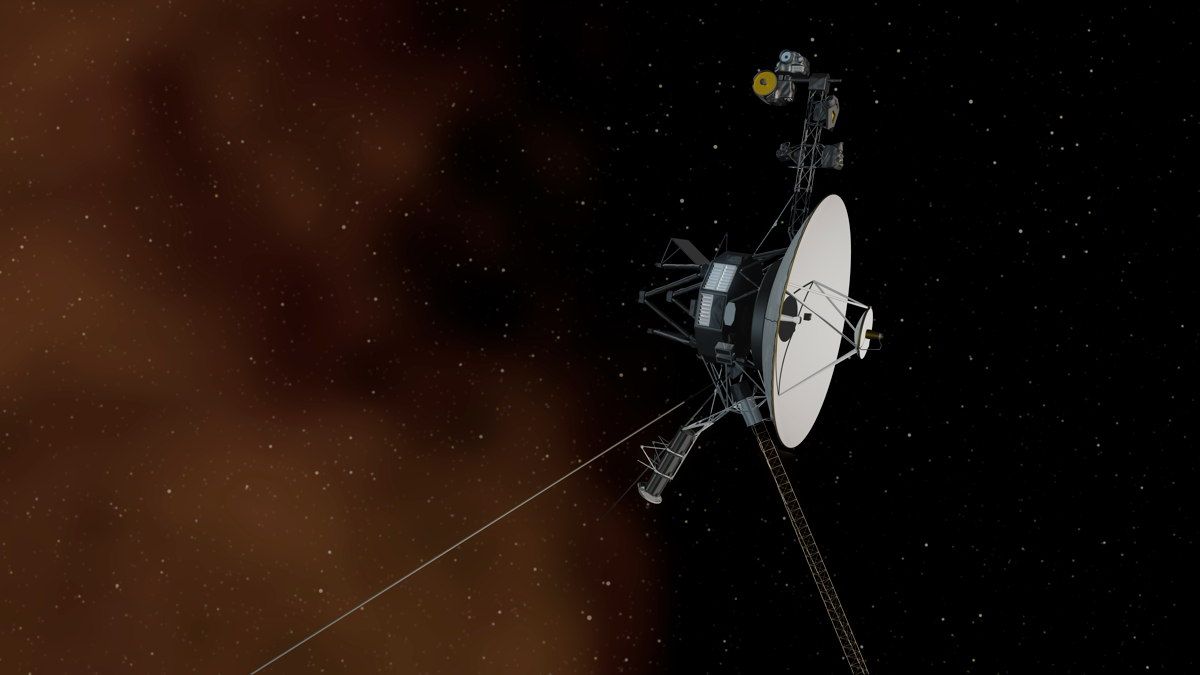In the vast expanse of space, amidst the twinkling stars and distant galaxies, a small spacecraft carries the hopes and dreams of humanity to the far reaches of the cosmos. Its name is Voyager 1, a testament to human ingenuity, curiosity, and the insatiable quest for knowledge. Launched by NASA more than four decades ago, Voyager 1 has become an emblem of exploration, resilience, and the boundless spirit of discovery. Join us as we embark on a journey through the remarkable saga of Voyager 1.
A Bold Beginning:
On September 5, 1977, Voyager 1 embarked on its historic mission, lifting off from Cape Canaveral, Florida, aboard a Titan IIIE/Centaur rocket. Its primary objective: to study the outer planets of our solar system — Jupiter and Saturn — up close and unveil the mysteries shrouding these distant worlds. Equipped with an array of scientific instruments and a golden record containing sounds and images of Earth, Voyager 1 set sail on an odyssey of exploration that would captivate the imagination of millions around the globe.
Close Encounters:
Voyager 1's encounters with Jupiter and Saturn yielded a treasure trove of scientific data and breathtaking images. It revealed the turbulent storms raging on Jupiter's surface, the intricate ring systems encircling Saturn, and the enigmatic moons of both gas giants. These close-up observations revolutionized our understanding of the outer solar system, unveiling a tapestry of wonders that had remained hidden from view for millennia.
The Pale Blue Dot:
Having completed its primary mission, Voyager 1 embarked on a trajectory that would carry it beyond the confines of our solar system. On February 14, 1990, as it hurtled towards the outer fringes of the heliosphere, Voyager 1 turned its cameras back towards Earth and captured an iconic image — the "Pale Blue Dot." In this remarkable photograph, Earth appears as a tiny speck suspended in a sunbeam, a poignant reminder of the fragility and preciousness of our planet amidst the vastness of space.
Interstellar Ambassador:
As Voyager 1 continues its journey into the unknown, it has become humanity's most distant emissary, carrying a message of peace, friendship, and goodwill to any extraterrestrial civilizations it may one day encounter. Affixed to the spacecraft is the Golden Record, a time capsule containing greetings in 55 languages, music from different cultures, and a selection of sounds representing life on Earth. Though Voyager 1 may never encounter another intelligent species, its mission symbolizes humanity's aspiration to reach out and connect with the cosmos.
Legacy of Exploration:
Today, Voyager 1 continues its solitary voyage through interstellar space, its instruments still operational and transmitting valuable data back to Earth. Though its power sources will eventually wane, and its signals will grow fainter with each passing year, Voyager 1's legacy will endure as a testament to the indomitable spirit of exploration that defines us as a species. Its odyssey serves as a reminder that, despite our differences and divisions, we are united by our shared curiosity and our quest to unravel the mysteries of the universe.
For more information about Voyager 1 and its incredible journey, visit NASA's Voyager website. There, you can explore in-depth details about the spacecraft, its mission, and the latest updates on its interstellar voyage.
In conclusion, Voyager 1 stands as a beacon of human achievement, a testament to our capacity to push the boundaries of knowledge and explore the unknown. As it continues its journey through the cosmos, Voyager 1 inspires us to dream, to imagine, and to reach for the stars. Its story reminds us that, despite the vastness of space, we are all interconnected — inhabitants of a tiny blue dot suspended in the cosmic ocean, bound together by the wonder of existence.






0 Comments